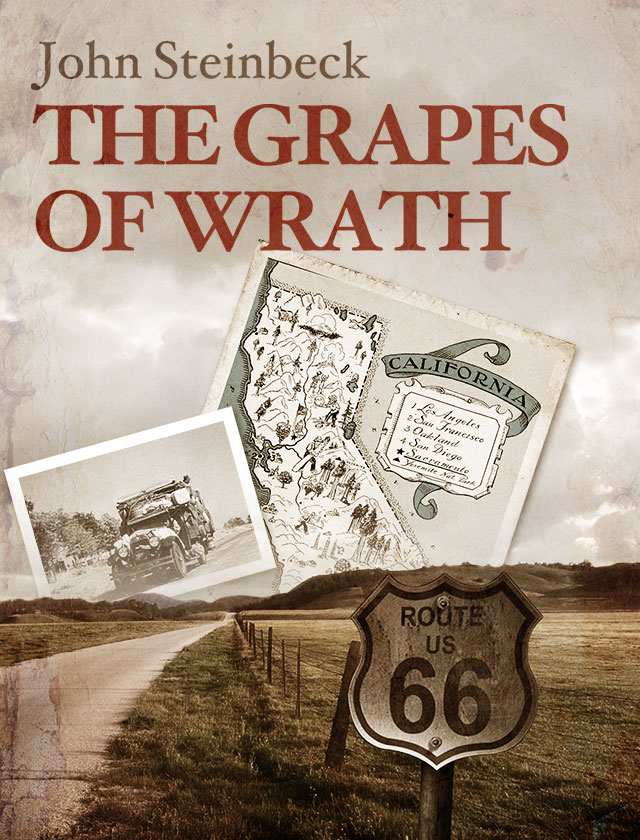The Grapes of Wrath
by John Steinbeck
Symbols and Themes
Wrath: Anger as a tool for action
The theme of wrath is indicated in the novel’s title and revisited throughout the story, particularly in Steinbeck’s portrayal of the landowners and banks that displace and exploit the Dust Bowl sharecroppers. Throughout The Grapes of Wrath, the characters’ wrath is frequently leveraged as a unifying force. In Chapter 25, Ma deliberately rouses Pa to anger so that he will make a decision. She explains to Tom: “Take a man, he can get worried an’ worried, an’ it eats his liver, and purty soon he’ll jus’ lay down and die with his heart et out. But if you can take an’ make ’im mad, why, he’ll be awright.” Ma understands that worry and fear take away a person’s capacity for action, while anger motivates a person to action. This belief is expressed on a larger scale at the end of Chapter 29: “And where a number of men gathered together, the fear went from their faces, and anger took its place. And the women sighed with relief, for they knew it was all right—the break had not come; and the break would never come as long as fear could turn to wrath.” This passage ends the last of the novel’s intercalary chapters, a final affirmation of the power of anger to motivate change.
Unity in the face of oppression
The Grapes of Wrath, at its core, affirms the value of unity in the face of oppression. It advocates the belief that working together creates strength, both intimately and on a wider political scale. Ma Joad intuitively understands that the family is stronger if they are united, and steadfastly resists the breakup of the family unit. In spite of Ma’s efforts, she is forced to accept the gradual disintegration of the family that is caused by the overarching tear in the social fabric. Spiritually, the importance of unity is expressed in Jim Casy’s vision of a single soul, of which individual souls are all a part. In Casy’s view, individual self-interest...
Sign up to continue reading Symbols and Themes >